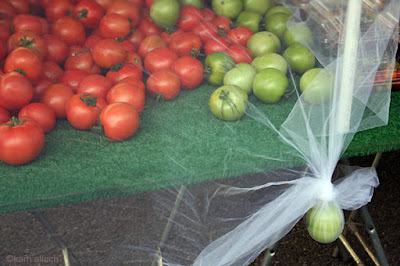 Meet Sir Edward Mellanby, the man who discovered vitamin D. Along with his wife, Dr. May Mellanby, he identified dietary factors that control the formation and repair of teeth and bones. He also identified the primary cause of rickets (vitamin D deficiency) and the effect of phytic acid on mineral absorption. Truly a great man! This research began in the 1910s and continued through the 1940s.
Meet Sir Edward Mellanby, the man who discovered vitamin D. Along with his wife, Dr. May Mellanby, he identified dietary factors that control the formation and repair of teeth and bones. He also identified the primary cause of rickets (vitamin D deficiency) and the effect of phytic acid on mineral absorption. Truly a great man! This research began in the 1910s and continued through the 1940s.What he discovered about tooth and bone formation is profound, disarmingly simple, and largely forgotten. I remember going to the dentist as a child. He told me I had good teeth. I informed him that I tried to eat well and stay away from sweets. He explained to me that I had good teeth because of genetics, not my diet. I was skeptical at the time, and rightly so.
Tooth structure is primarily determined during growth. Well-formed teeth are highly resistant to decay, while poorly-formed teeth are cavity-prone. Drs. Mellanby demonstrated this by showing a strong correlation between tooth enamel defects and cavities in British children. The following graph is drawn from several studies he compiled in the book Nutrition and Disease (1934). "Hypoplastic" refers to enamel that's poorly formed on a microscopic level.
 The graph is confusing, so don't worry if you're having a hard time interpreting it. If you look at the blue bar representing children with well-formed teeth, you can see that 77% of them have no cavities, and only 7.5% have severe cavities (a "3" on the X axis). Looking at the green bar, only 6% of children with the worst enamel structure are without cavities, while 74% have severe cavities. Enamel structure is VERY strongly related to cavity prevalence.
The graph is confusing, so don't worry if you're having a hard time interpreting it. If you look at the blue bar representing children with well-formed teeth, you can see that 77% of them have no cavities, and only 7.5% have severe cavities (a "3" on the X axis). Looking at the green bar, only 6% of children with the worst enamel structure are without cavities, while 74% have severe cavities. Enamel structure is VERY strongly related to cavity prevalence.What determines enamel structure during growth? Drs. Mellanby identified three dominant factors:
- The mineral content of the diet
- The fat-soluble vitamin content of the diet, chiefly vitamin D
- The availability of minerals for absorption, determined largely by the diet's phytic acid content
Optimal tooth and bone formation occurs only on a diet that is sufficient in minerals, fat-soluble vitamins, and low in phytic acid. Drs. Mellanby used dogs in their experiments, which it turns out are a good model for tooth formation in humans for a reason I'll explain later. From Nutrition and Disease:
Thus, if growing puppies are given a limited amount of separated [skim] milk together with cereals, lean meat, orange juice, and yeast (i.e., a diet containing sufficient energy value and also sufficient proteins, carbohydrates, vitamins B and C, and salts), defectively formed teeth will result. If some rich source of vitamin D be added, such as cod-liver oil or egg-yolk, the structure of the teeth will be greatly improved, while the addition of oils such as olive... leaves the teeth as badly formed as when the basal diet only is given... If, when the vitamin D intake is deficient, the cereal part of the diet is increased, or if wheat germ [high in phytic acid] replaces white flour, or, again, if oatmeal [high in phytic acid] is substituted for white flour, then the teeth tend to be worse in structure, but if, under these conditions, the calcium intake is increased, then calcification [the deposition of calcium in the teeth] is improved.Other researchers initially disputed the Mellanbys' results because they weren't able to replicate the findings in rats. It turns out, rats produce the phytic acid-degrading enzyme phytase in their small intestine, so they can extract minerals from unfermented grains better than dogs. Humans also produce phytase, but at levels so low they don't significantly degrade phytic acid. The small intestine of rats has about 30 times the phytase activity of the human small intestine, again demonstrating that humans are not well adapted to eating grains. Our ability to extract minerals from seeds is comparable to that of dogs, which shows that the Mellanbys' results are more applicable to humans than those in rats.
Drs. Mellanby found that the same three factors determine bone quality in dogs as well, which I may discuss in another post.
Is there anything someone with fully formed enamel can do to prevent tooth decay? Drs. Mellanby showed (in humans this time) that not only can tooth decay be prevented by a good diet, it can be almost completely reversed even if it's already present. Dr. Weston Price used a similar method to reverse tooth decay as well. I'll discuss that in my next post.



































